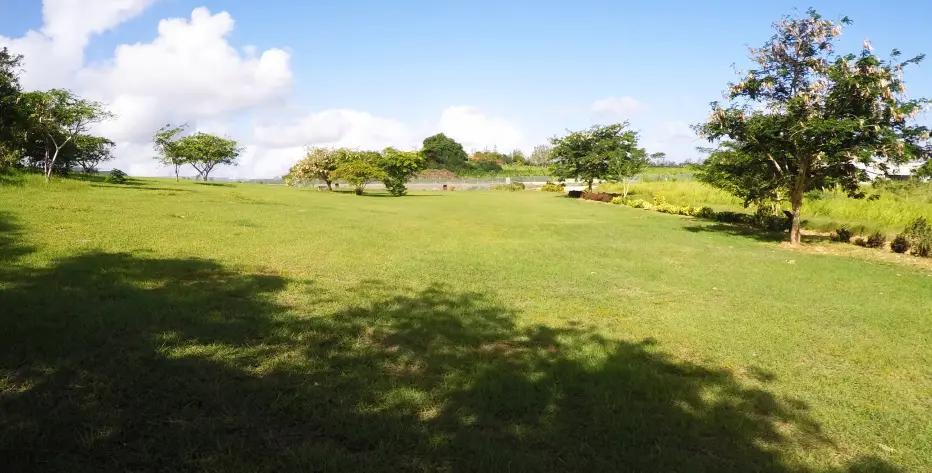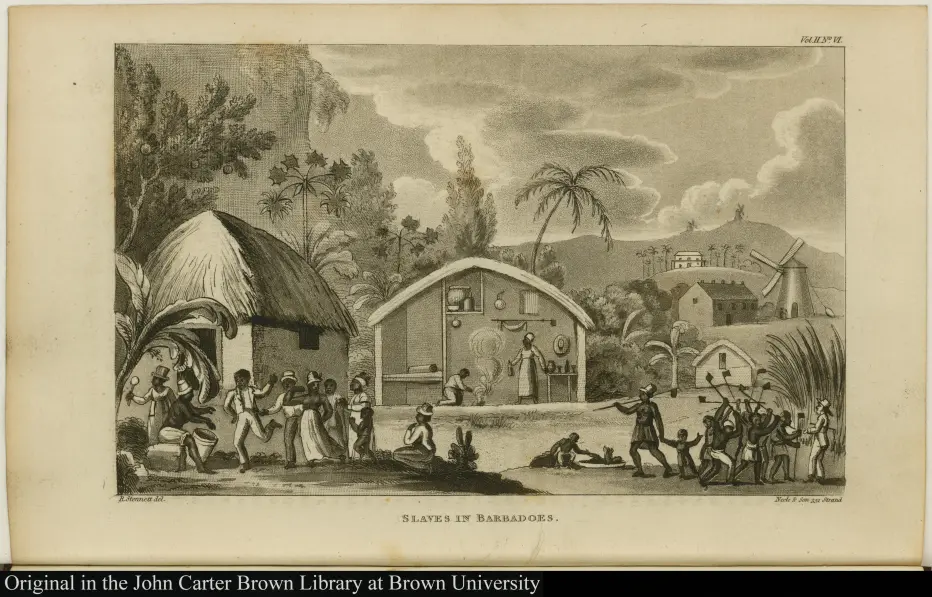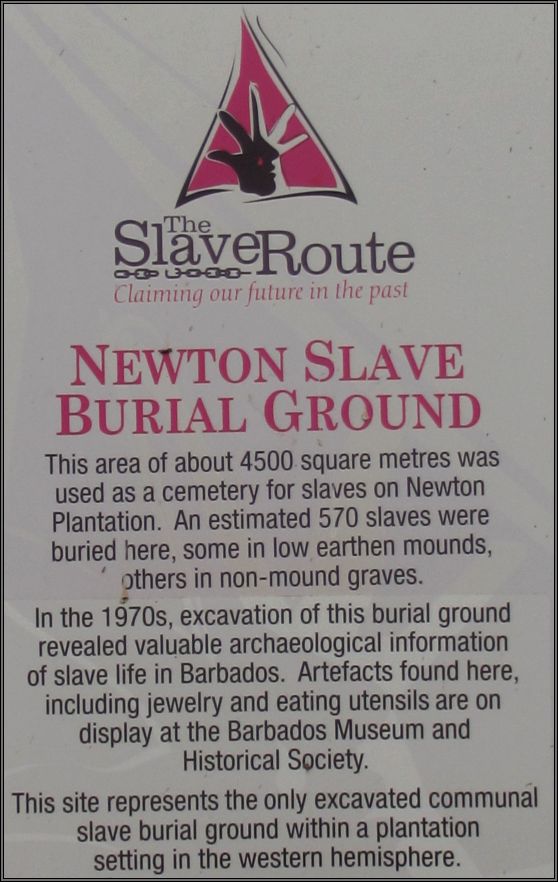Newton Slave Burial Ground
The Newton Slave Burial Ground is the largest and earliest slave burial ground discovered in Barbados. Here lie the remains of nearly six hundred enslaved men, women and children who toiled and suffered through brutal plantation slavery.

The Barbados sugar industry was heavily dependent on slavery. Between the 1630s and 1838 (full emancipation) thousands of slaves were buried in unmarked graves in unconsecrated plantation cemeteries throughout the island.
Newton Plantation was excavated in the 1970s and is the earliest and largest undisturbed plantation slave cemetery found in the New World. The plantation is located in the south of the island, and the burial site is close to the slave village that once existed on the plantation which was established by Samuel Newton in the 1660's.

Credit: Courtesy of the John Carter Brown Library
The land is now owned by the Barbados Museum and Historical Society.

In November 2019, the Barbados Prime Minister carried soil taken from the burial ground to Ghana where it was buried in Assin Manso, a large slave trading site during the trans-Atlantic slave trade.
Newton Plantation is the site of the Barbados Heritage District (now being developed) - a memorial, global research institute, and museum - to honor the past and shed light on the impact of slavery.







